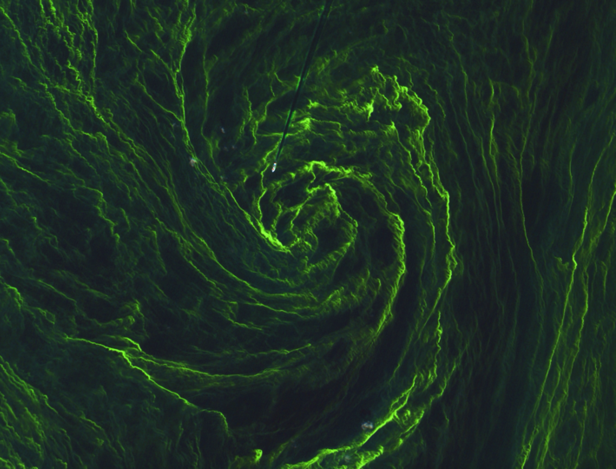Mediterranean and Baltic Seas are somehow two different worlds in term of biogeochemical dynamics, but some challenges they face are common, especially those related to toxic pollutants and harmful algal blooms that may affect ecosystem, aquaculture and tourism. Toxicity can be linked to algal blooms, which are operationally monitored by different research teams, usually by ships. Satellites may instead provide a more informative synoptic view, that can be also assimilated by the forecast modelling systems, as that one managed by OGS within the CMEMS-MED-MFC.
The image refers to an algal bloom in the Baltic Sea (7 August 2015), with details down to 10 metres resolution. Such resolution in multiple bands allows Copernicus services to monitor biological activity in European regional seas (Sentinel-2A was optimised for land applications, but revealed itself a valuable tool for monitoring ocean colour as well). Sentinel-2A was recently launched by ESA and will soon provide data on a routine basis.
Stable meteo-marine conditions (warm weather and calm seas) occurred during summer 2015 increased the biological activity in the central Baltic Sea, with a specific dominance of cyanobacteria(1). In this area, blooms can appear as greenish streaky or vortical structures following density gradients, that may help to identify the biological activity, as specifically shown in this image.
More information can be found on the official ESA page:
(1) As reported by the Finnish algae monitoring service Alg@line
http://www.syke.fi/en-us/Research__Development/Research_and_development_projects/Projects/Real_time_algal_monitoring_in_the_Baltic_Sea_Algline
